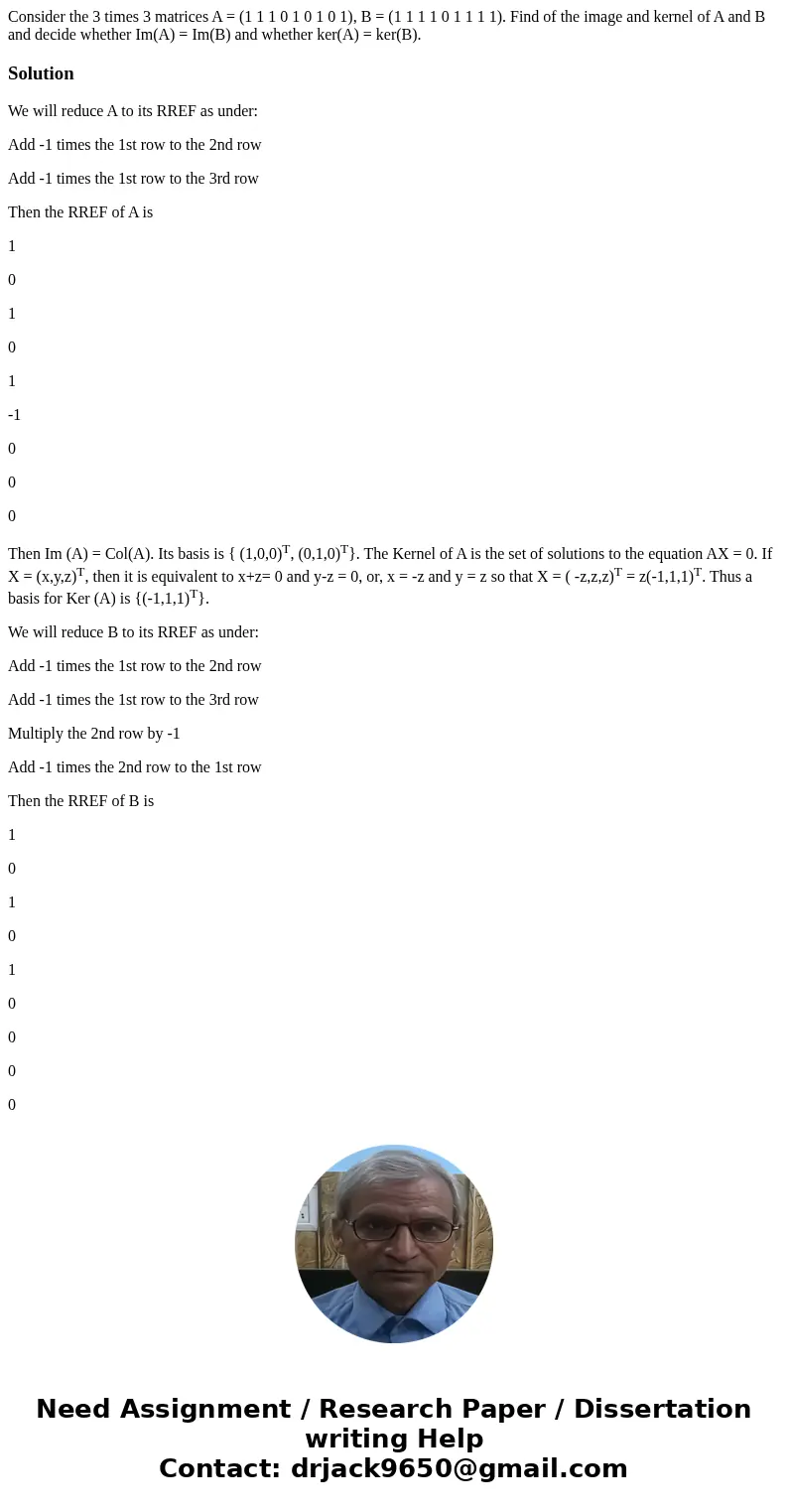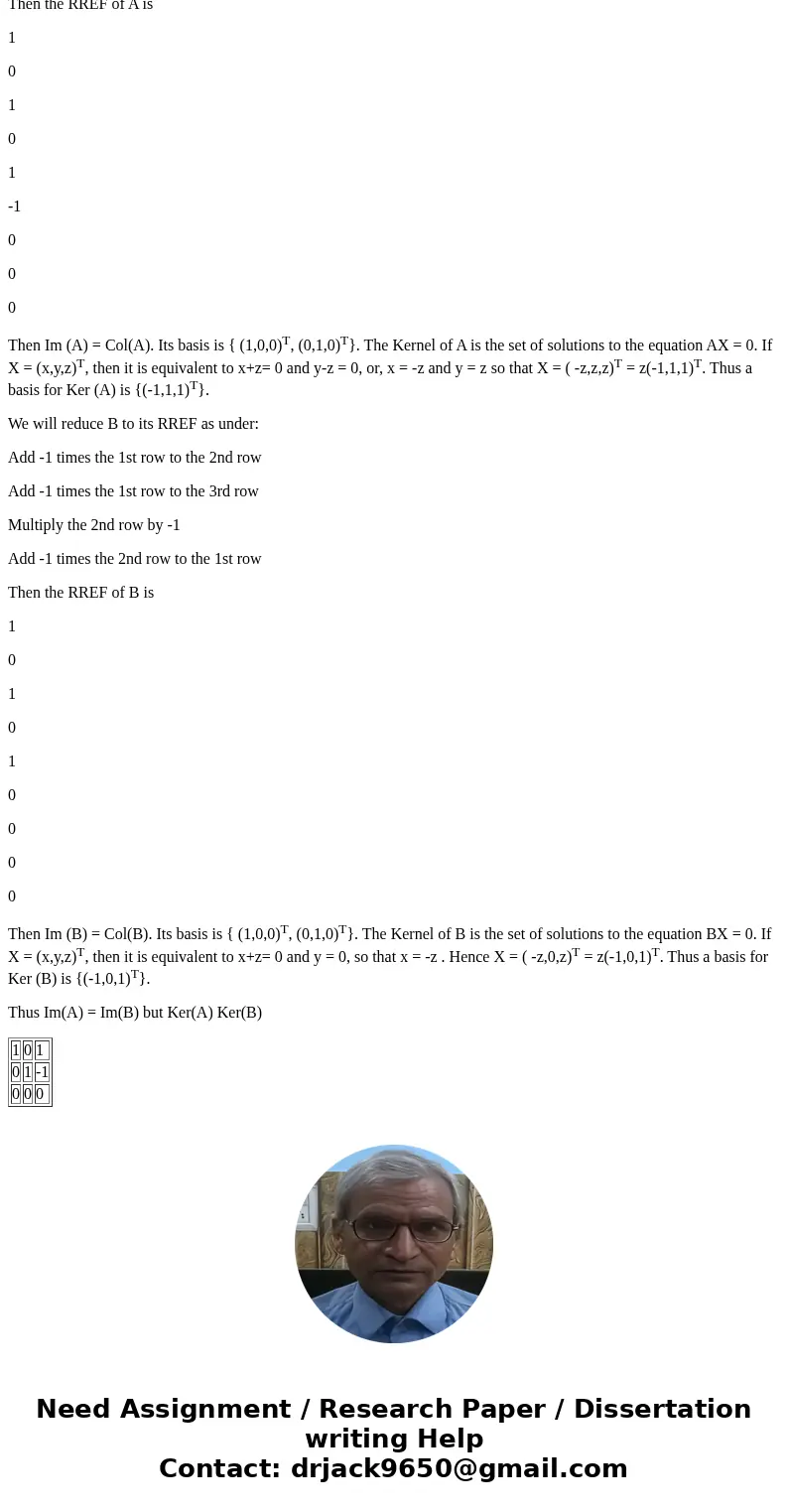Consider the 3 times 3 matrices A 1 1 1 0 1 0 1 0 1 B 1 1
Solution
We will reduce A to its RREF as under:
Add -1 times the 1st row to the 2nd row
Add -1 times the 1st row to the 3rd row
Then the RREF of A is
1
0
1
0
1
-1
0
0
0
Then Im (A) = Col(A). Its basis is { (1,0,0)T, (0,1,0)T}. The Kernel of A is the set of solutions to the equation AX = 0. If X = (x,y,z)T, then it is equivalent to x+z= 0 and y-z = 0, or, x = -z and y = z so that X = ( -z,z,z)T = z(-1,1,1)T. Thus a basis for Ker (A) is {(-1,1,1)T}.
We will reduce B to its RREF as under:
Add -1 times the 1st row to the 2nd row
Add -1 times the 1st row to the 3rd row
Multiply the 2nd row by -1
Add -1 times the 2nd row to the 1st row
Then the RREF of B is
1
0
1
0
1
0
0
0
0
Then Im (B) = Col(B). Its basis is { (1,0,0)T, (0,1,0)T}. The Kernel of B is the set of solutions to the equation BX = 0. If X = (x,y,z)T, then it is equivalent to x+z= 0 and y = 0, so that x = -z . Hence X = ( -z,0,z)T = z(-1,0,1)T. Thus a basis for Ker (B) is {(-1,0,1)T}.
Thus Im(A) = Im(B) but Ker(A) Ker(B)
| 1 | 0 | 1 |
| 0 | 1 | -1 |
| 0 | 0 | 0 |


 Homework Sourse
Homework Sourse